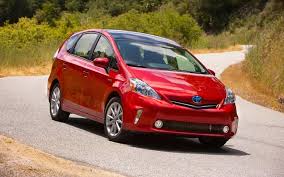In recent weeks Toyota has come under fire for its reluctance to manufacture any BEVs (pure electric vehicles). Despite leading the automotive field with its revolutionary Prius, a HEV (hybrid electric vehicle) and then the Prius Plus, a PHEV (plug-in hybrid electric vehicle), Toyota has held back in producing a BEV, preferring to put most of its research and development effort into hydrogen-powered vehicles (now sold primarily in East Asia). Is this an example of a legacy producer protecting the sales of its existing models by not offering a competing BEV? Or do the smart industry folks at Toyota see something in hydrogen that others are missing?
A landmark study just released in the journal Energy Science & Engineering (http://doi.org/10.1002/ese3.956 – open access), written by engineering professors at Cornell and Stanford, is among the first to do a greenhouse gas (GHG) audit of the techniques known to produce commercial quantities of hydrogen. They find that hydrogen fuel is unlikely to reduce greenhouse gas emissions under a plausible range of conditions. From this, many will conclude, as I have, that hydrogen is unlikely to make a contribution as a bridge fuel to a zero emissions future. A recent New York Times article (https://www.nytimes.com/2021/08/12/climate/hydrogen-fuel-natural-gas-pollution.html?action=click&module=Well&pgtype=Homepage§ion=Climate%20and%20Environment) makes the case that the provisions in the infrastructure bill to support a hydrogen economy may be an unavoidable sop to Joe Manchin, US Senator from a major natural gas producing state, to prolong the fossil fuel industry rather than clean up the air. But wait, how does natural gas relate to hydrogen?
The three colors of hydrogen. Commercial quantities of hydrogen are made by three classes of processes: 1) Hydrogen in use today is called “gray” hydrogen. It is formed from the methane in natural gas using substantial quantities of energy, and releasing large amounts of carbon dioxide. 2) “Blue” hydrogen is manufactured the same way as gray hydrogen, except that the carbon dioxide released in manufacture is captured in the smokestack, concentrated, and buried in the ground for – you know – forever. 3) “Green” hydrogen is manufactured by hydrolysis of water, using even greater amounts of energy. Today, green hydrogen is not made commercially, because generating the required vast amounts of energy is too expensive, measured in either greenhouse gas emissions or dollar cost.
A detour into the possible future of green hydrogen. Imagine a scenario in which there are huge amounts of surplus renewable energy at certain times (unneeded windmills turning at night, or solar panel output unused in the middle of sunny days). This energy could be made useful if it could only be stored. Used EV batteries are one storage possibility; hydrolyzing water to make storable green hydrogen is another possibility. Hydrogen is light and might have future value as a commercial aviation fuel. It has also been suggested as a good fuel for heavy trucking, though Elon thinks batteries will propel trucks more efficiently.
Blue versus gray. Although expensive green hydrogen might have a future as an energy storage medium or a fuel for commercial aviation, the immediate future for hydrogen fuel seems to be a contest between the blue and the gray. It is to this comparison that the engineering professors devoted their attention. They tallied up the emissions of carbon and methane (a much stronger greenhouse gas than carbon dioxide, but a more short-lived one) coming from the gray and blue hydrogen pathways and were surprised to find that using natural gas to produce a zero tailpipe-emissions fuel made no sense, in that the upstream emissions (from drilling, extracting, and reforming natural gas) were worse in terms of global warming and more costly than simply burning the natural gas for fuel.
This conclusion depends on assumptions. One critical assumption was that methane leakage in the production of natural gas was about 3.5% (in line with recent evidence from the real world, but their conclusions were unchanged if the leakage rate could be brought down to 1.53%). The second key assumption was that their time horizon was 20 years: longer time periods give more weight to carbon dioxide emissions and less to the shorter-lived methane emissions. Keep in mind that the natural gas industry is not planning on expiring tomorrow. The longer it is kept in business, the further into the future are felt the potent GHG effects of methane release. A third assumption is that carbon sequestration and geological storage works flawlessly and in perpetuity, which as the authors note is “an optimistic and unproven assumption.”
Under these assumptions, the engineering professors find “Perhaps surprisingly, the greenhouse gas footprint of blue hydrogen is more than 20% greater than burning natural gas or coal [my emphasis] for heat and some 60% greater than burning diesel oil for heat, again with our default assumptions.”
Getting back to EVs. This discovery about blue hydrogen would seem to narrow Toyota’s options for playing the hydrogen card as their ticket to a renewable future for personal transportation. Gray hydrogen is the status quo, unacceptable if one is keen to reduce the rate of climate change. Blue hydrogen is evidently worse. Green hydrogen as an automotive fuel seems extremely inefficient and would require vast acreages of land devoted to generating and transporting excess energy for hydrolyzing water. We will see how quickly Toyota incorporates this new finding; my guess is that giant corporations like Toyota will take some time.

